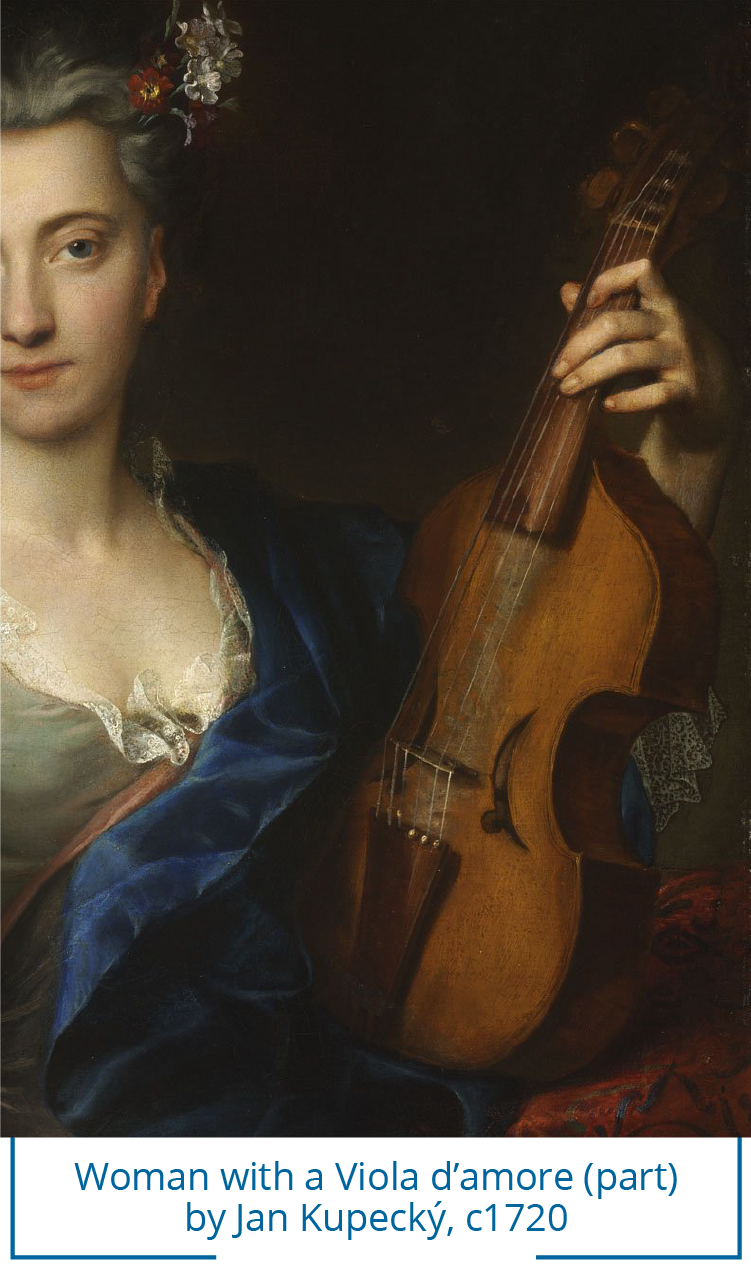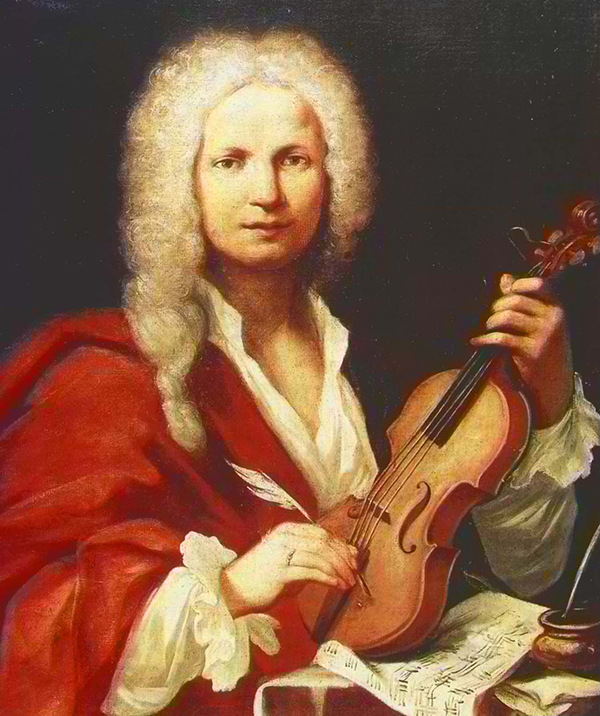CONCERTO IN D MINOR FOR VIOLA, PIPA AND STRINGS, RV 540
Antonio Vivaldi
(b. Venice, March 4, 1678; d. Vienna, Austria, July 27/28, 1741)
Composed 1740; 12 minutes

Setting aside bagpipes, alphorn and serpent, Vivaldi wrote concertos for just about every instrument that was played in his day. Throughout much of the 18th century, composers were expected to compose quickly. Patrons and audiences looked forward to new compositions and premières; concerts were put on to showcase the new rather than to reinterpret the old. Still, Vivaldi’s contemporaries recognized his fluency and skill in composition as something extraordinary. He wrote over 500 concertos and eight of them are known to be for viola d’amore.
 Although there is no standard size, the viola d’amore is about the size of a viola but with certain characteristics associated with the viol. There are no frets and it was played under the chin, with six or seven playing strings and the same number of sympathetic (resonating) strings, which run under the fingerboard into separate tuning pegs. Vivaldi originally scored his D minor double concerto for viola d’amore and lute; today’s arrangement is for viola and pipa. It is one of his final works, written for a concert given in Venice March 21, 1740, in honor of the visiting Prince-Elector of Saxony, Friedrich Christian. Lightly accompanied, the two solo instruments are elegantly contrasted and compared throughout, giving each an opportunity to be heard to their best advantage.
Although there is no standard size, the viola d’amore is about the size of a viola but with certain characteristics associated with the viol. There are no frets and it was played under the chin, with six or seven playing strings and the same number of sympathetic (resonating) strings, which run under the fingerboard into separate tuning pegs. Vivaldi originally scored his D minor double concerto for viola d’amore and lute; today’s arrangement is for viola and pipa. It is one of his final works, written for a concert given in Venice March 21, 1740, in honor of the visiting Prince-Elector of Saxony, Friedrich Christian. Lightly accompanied, the two solo instruments are elegantly contrasted and compared throughout, giving each an opportunity to be heard to their best advantage.